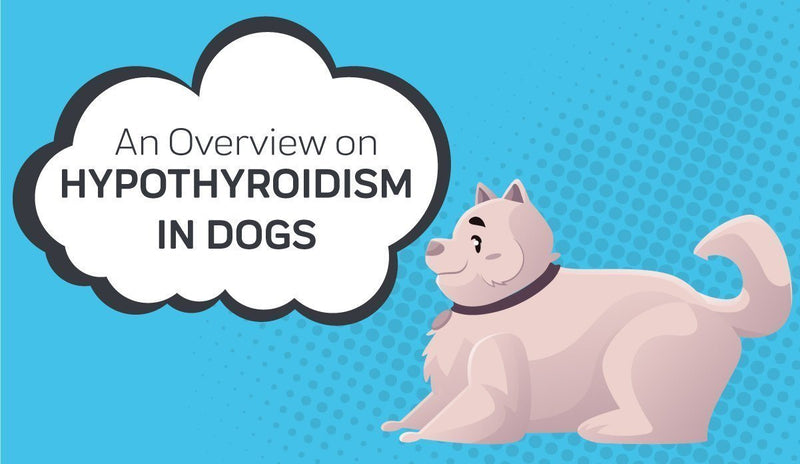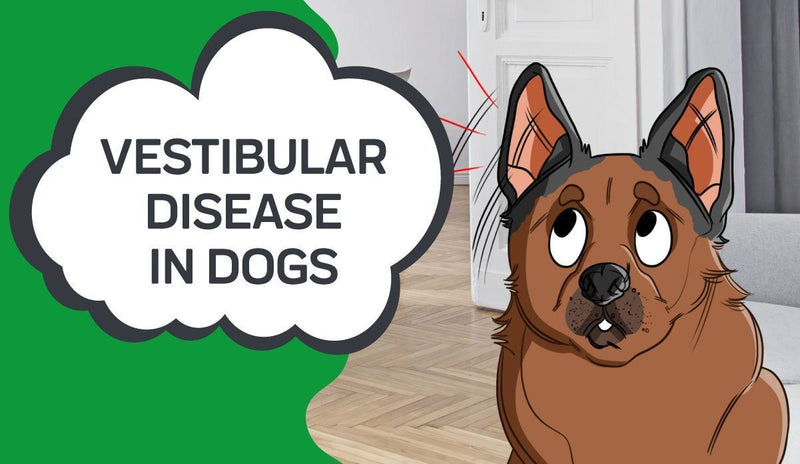Feline Immunodeficiency Virus (FIV): Symptoms, Diagnosis, and Treatment
![]() Reading Time:
Reading Time:
- How Is the Virus Spread?
- A Brief History of FIV in Cats
- What Are the Symptoms of FIV in Cats?
- What Are the Stages of FIV in Cats?
- How Is FIV Diagnosed?
- Timelines for Negative and Positive Test Results
- False Negative Test Results
- False Positive Test Results
- How to Treat FIV in Cats
- How to Prevent FIV in Cats
- Conclusion - FIV cats
Humans often spread viruses to each other, but they aren’t the only species to do so. Cats are another type of animal with this ability. One virus that affects felines across the world is Feline Immunodeficiency Virus (FIV). As scientists continue to learn about this virus, they discover ways to help FIV positive cats.
To fully understand FIV cats, we’ll take a look at how it is transmitted, its symptoms, how it is diagnosed, and options for treatment and prevention.
How Is the Virus Spread?
FIV is a lentivirus. Lentiviruses include any retroviruses with a long delay/incubation period. This virus, which is a feline lentivirus, works similarly to HIV in humans. Other species with lentiviruses include goats, apes, cows, sheep, and horses.
An FIV cat’s immune system is slow acting. Symptoms of the disease may not appear in an infected cat for many years after the cat is infected.

Only cats can become infected with this virus and spread it to other felines not male cats. Male cats that exhibit aggressive behavior are the most common transmitters. If an FIV positive cat is fighting with another non infected cats and leaves bite wounds, this may result in an exposure. The virus is transferred through saliva. Exposure may also occur if a wound is contaminated with the infected cats’ blood.
Mothers can also transmit it to their kittens, but this is rare. Current research does not indicate that the virus is spread commonly through feline sexual encounters.
A Brief History of FIV in Cats
FIV positive cats exist around the globe. The virus was identified in the late 1980s by Niels Pederson and Janet Yamamoto. Research suggests that the origins of the virus are linked to African felines.
The virus is relatively rare and is only found in approximately 1-5% of cats around the world. Non infected cats who live outdoors or are involved in aggressive behaviors are at a higher risk of exposure.
What Are the Symptoms of FIV in Cats?
It is usually difficult to identify the FIV virus in a cat by its symptoms alone. Symptoms might not emerge for several years. The FIV virus weakens the immune system response over time, eventually leading to complications and increasing the likelihood of other diseases.
If an FIV positive cat does start to present clinical signs, signs of illness may include the following:
Enlargement of the lymph nodes
The virus reproduces in and spreads to the lymph nodes throughout the body. This causes them to increase in size. This may be temporary or last for some time.
Fever
As the virus spreads it will cause an initial fever in FIV positive cats. It may also cause a more persistent fever later on as the body fights the virus.
Diarrhea
The virus can also cause gastrointestinal distress in infected cats. Diarrhea is a common clinical signs in cats with FIV.
Loss of appetite and weight loss
FIV positive cats may lose interest in their food and lose weight quickly as a result. Weight loss may also occur from digestive issues.
Stomatitis
This is an inflammation of the mouth that is common with FIV positive cats.
Gingivitis
This condition is characterized by inflammation of the gums. They may suffer from other dental diseases as well.
Poor coat and skin condition
FIV positive cats may have irritated skin or fur loss. They may be less inclined to self-groom, which leads to a poor coat.
Discharge
FIV positive cats may have excessive discharge, most commonly from the eyes and the nose. Infected cats may also be prone to sneezing.
Conjunctivitis
An inflammation or build-up in the eye area is common in FIV cat. This typically affects the eye membrane.
Urination
FIV positive cats may experience issues with their kidneys and urinary tract. This may lead to urination outside of the litter box, difficulty urinating, and more.
Changes in behavior
FIV positive cats may show behavioral changes. They may become more aggressive or lethargic, for example.
Neurological issues
Cats may experience neurological disorders such as seizures.
FIV positive cats have a weakened immune system, which means they are more prone to infections. Other viruses and bacteria in their environment pose a threat to their compromised systems. Various cancers and blood diseases, especially conditions like feline leukemia, are common in felines who have a weakened immune system from FIV.
What Are the Stages of FIV in Cats?
Like HIV in humans, FIV has different stages. Below are brief descriptions of the different phases of the virus in FIV positive cats:
- Phase 1: This first stage of viral infection, also known as the acute stage, is usually short. It may be characterized by symptoms like initial fever, loss of appetite, and enlargement of the lymph nodes
- Phase 2: This stage, also known as the latent stage, is usually the longest one. Cats with FIV (feline immunodeficiency virus) can be in this stage for years and live fairly healthy lives. During this stage, FIV cats are generally asymptomatic.
- Phase 3: In the final stage, the virus progresses to its fullest point. It is known as Feline Acquired Immune Deficiency Syndrome (commonly referred to as FAIDS or feline AIDS). It is similar to how HIV progresses into AIDS in humans. By this point, infected cats are at their weakest. The cat will be extremely susceptible to other diseases and viruses.
How Is FIV Diagnosed?
FIV is diagnosed through blood work. A technician will carefully examine the blood sample. The technician will look for the presence of antibodies, which is an immune response to the virus. If the animal has the virus but its immune system has not yet been affected, it may not have any FIV antibodies yet.
These antibodies can be detected using a variety of techniques, including:
- Western blot
- Enzyme-linked immunosorbent assay (ELISA) (One of the more common tests)
- Immunofluorescence assay (IFA)
This test may be performed at a vet clinic with the help of a kit or be sent to special diagnostic labs. Most vets will confirm one positive results by using another type of test.
When testing a cat, the vet or technician will also determine the virus subtype (there are five). The specific subtype a cat possesses may determine its treatment options. Different vaccines also work against different subtypes of the virus.
Timelines for Negative and Positive Test Results
Because FIV is a slow-acting disease, it may not produce an immune response in infected cats for a considerable amount of time, understanding timelines for testing is important. There are also situations in which a test will produce a false negative or a false positive result. For this reason, multiple tests may be necessary to confirm the presence of FIV in a cat.
False Negative Test Results
If a cat has been exposed to the virus, it takes approximately 8 to 12 weeks for enough antibodies to show up for testing purposes. False negatives may occur during this interval if enough FIV antibodies have not been produced. It is usually advised that cats be tested a minimum of 60 days after it is believed they were exposed to the virus.
If a cat has advanced stage FIV, it may also test negative during a test. This is rare, however, and only occurs when the system is so compromised that the infected cats don’t produce enough antibodies.
False Positive Test Results
Kittens
Cat mothers with FIV infection and their kittens present a unique phenomenon when it comes to testing. Kittens with FIV-positive mothers may test positive for FIV. While mothers with FIV infection can pass the virus on to their young, the opposite may also be true.
Kittens receive their mother’s antibodies through her milk. The presence of these antibodies may cause the kitten to test positive, even if the young cat hasn’t contracted the FIV infection. They are likely to grow up to be healthy cats with a quality of life.
This false-positive related to the mother’s antibodies may last for several months but usually stops after 6 months of age. For this reason, young FIV positive cats should be retested every 60 days or so until they are 6 months old. The transmission of the virus to kittens from their mother is rare.
FIV Vaccines
A cat that has been vaccinated for FIV may also test positive. When a cat is given the FIV vaccine, it prompts the body to produce antibodies. During an antibody test, these antibodies may be confused for a natural antibody response. When testing a FIV infected cat, it is important to have their full vaccination record on hand if possible.
How to Treat FIV in Cats
Unfortunately, there is no cure for FIV and the immune complications that result from it. An FIV positive cat will have it for the rest of its life.
Because the virus is slow acting, it can take years for symptoms to arise in cats infected with FIV.
An FIV positive cat may live normally for many years before its health starts to deteriorate. It is also possible for FIV infected cats to experience periods of health interspersed with sickness.
There are few potential treatment options for infected cats with FIV. Humans treat human immunodeficiency virus (HIV) with special medications, some of which have been used on cats infected with FIV with limited success. Some of the semi-successful medications include AZT and interferon. There is also some anecdotal evidence that suggests primrose oil is helpful in the early stages for FIV infected cats.
How to Prevent FIV in Cats
Although the treatment options of FIV are limited, there are ways to prevent the disease in cats. Vaccination is one key component.
Vaccines that help cats fight against FIV are currently available, however, there are some risks associated with this vaccine. Cats who receive this vaccine, for example, have a higher risk of developing vaccine-associated-sarcoma (a type of cancer). Cat owners should discuss the advantages and disadvantages of vaccinating their cats with their vet.
Vaccines do not protect all cats against the virus, so taking other preventative measures is important. This is the only way to fully protect cats from FIV. Below are some of the precautions cat owners can take:

Keeping cat indoors: The primary mode of transmission for FIV is bite wounds from cats infected with FIV. This usually means outdoor cats with aggressive behaviors. Cat indoors generally have a longer lifespan than cats that live outdoors.
Only bringing FIV-negative cats into the home: If an uninfected cat is living alone or with other uninfected cats, owners should be careful when introducing new cats into the home. New cats should be tested for FIV before moving in with other cats.
Separating FIV positive cats from negative cats: If an owner does choose to home infected cats and uninfected cats, they should not be sharing food bowls and keep them in separate living areas. .
Cleaning spaces where an FIV positive cat has occupied
FIV cannot survive longer than a few hours on its own. However, it is still a good idea for cat owners to thoroughly clean any space that FIV infected cats have occupied. FIV positive cats may carry other infectious agents that could be dangerous to additional cats in the space. When cleaning a space, owners should:
- Replace or disinfect frequented items such as bedding, litter boxes, food and water bowls that the FIV positive may have used
- Cleaning and disinfecting floors and carpets in the FIV infected cat space. Vacuuming carpets and mopping hard surfaces are both good ideas.
Conclusion - FIV cats
Although FIV is rare for most cats, all cat owners or animal specialists should be knowledgeable on the subject. They should also take the proper steps to prevent exposures.
Lastly, owners of infected cats should remember that most FIV cats are capable of living long, happy quality of life.
Sources:
Feline Immunodefiency VirusEverything You Need to Know About FIV Positive Cats
Feline Friend
Feline Immunodeficiency Virus

LEARN MORE











 CBD Oil for Dogs
CBD Oil for Dogs Advanced Mobility Support Chews for Dogs
Advanced Mobility Support Chews for Dogs All Natural Oatmeal & Honey Shampoo + Conditioner for Dogs
All Natural Oatmeal & Honey Shampoo + Conditioner for Dogs CBD Dog Treats
CBD Dog Treats




